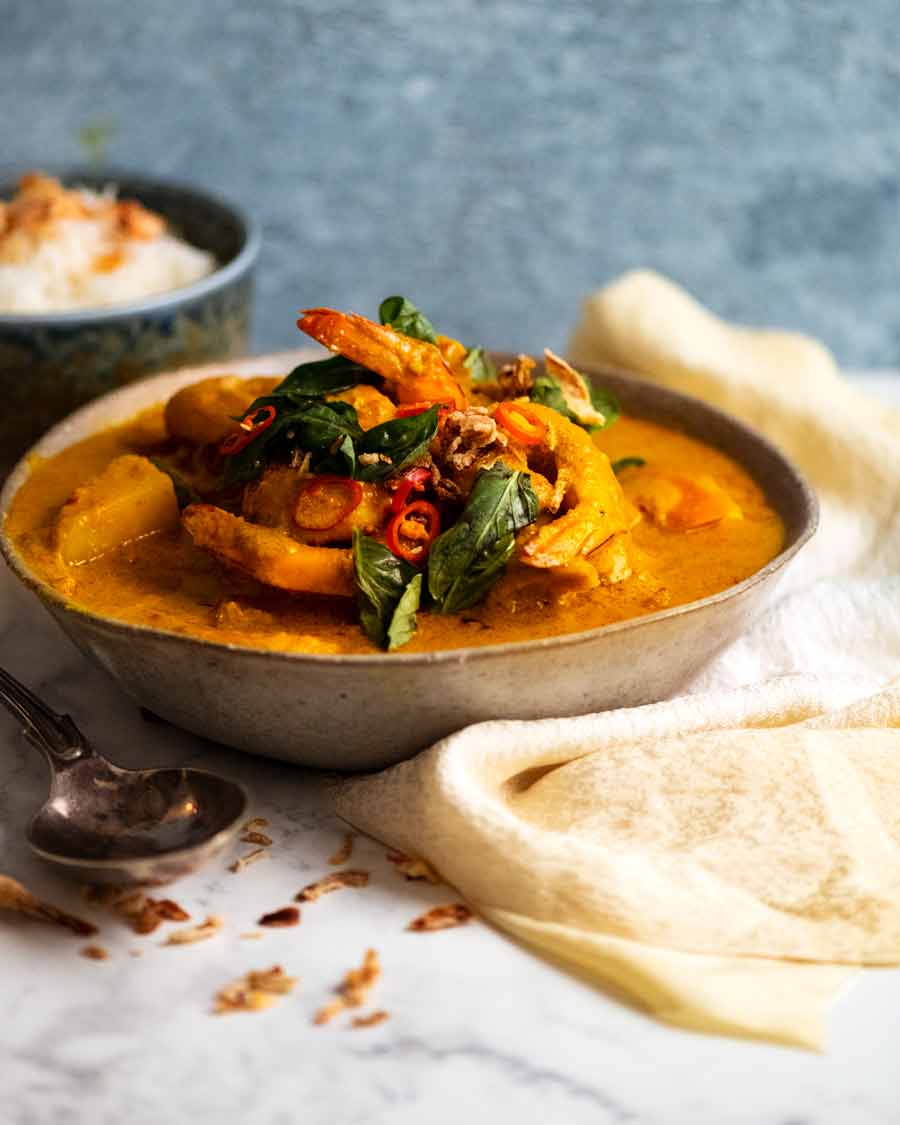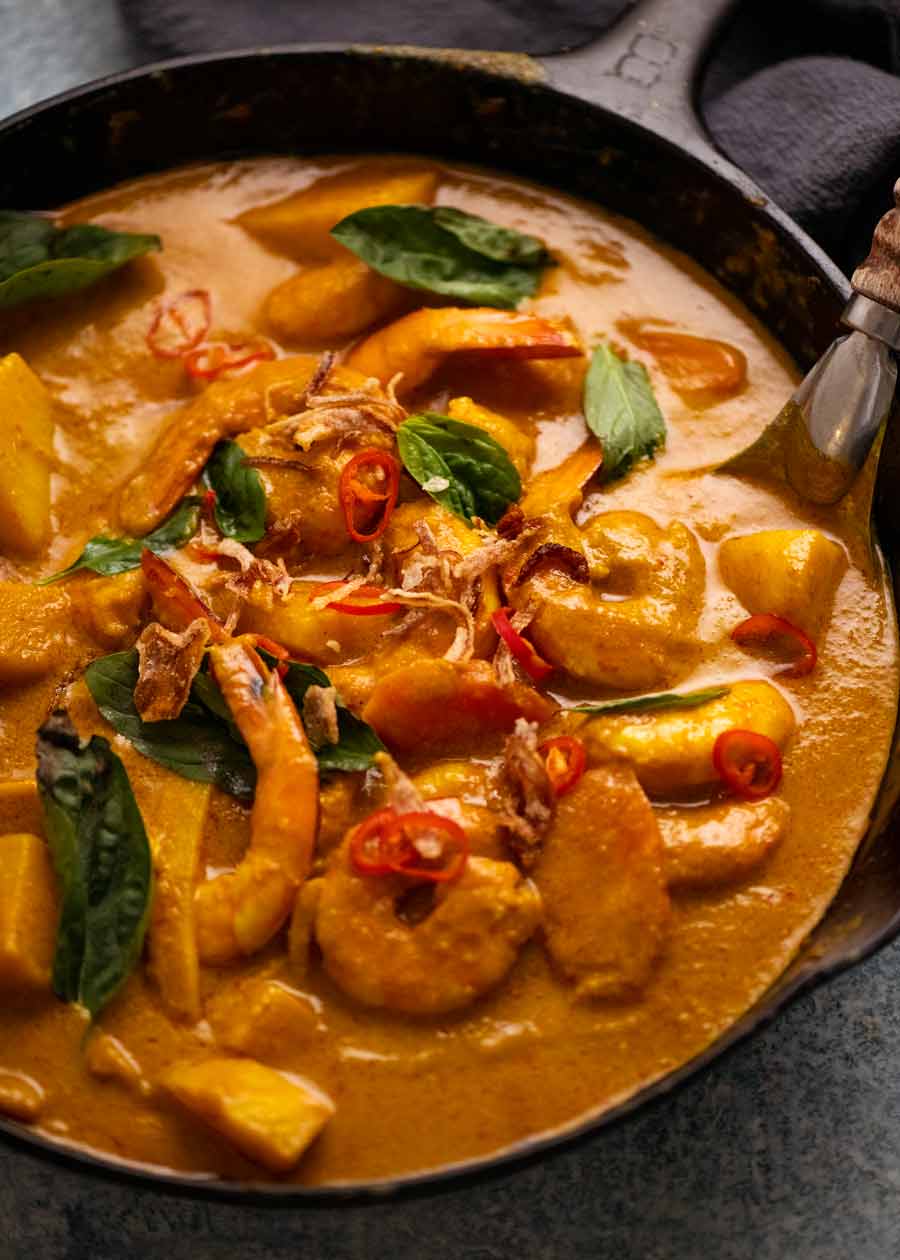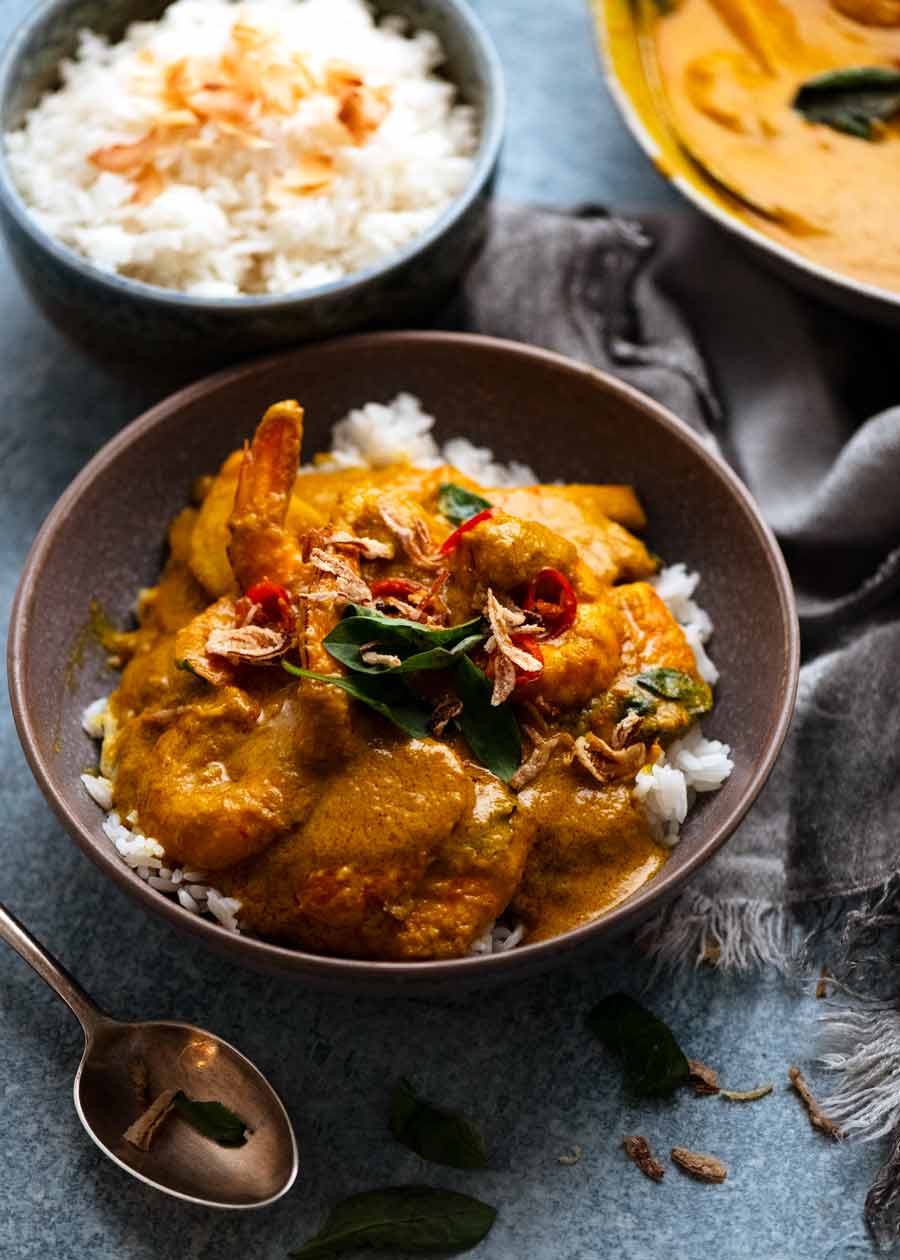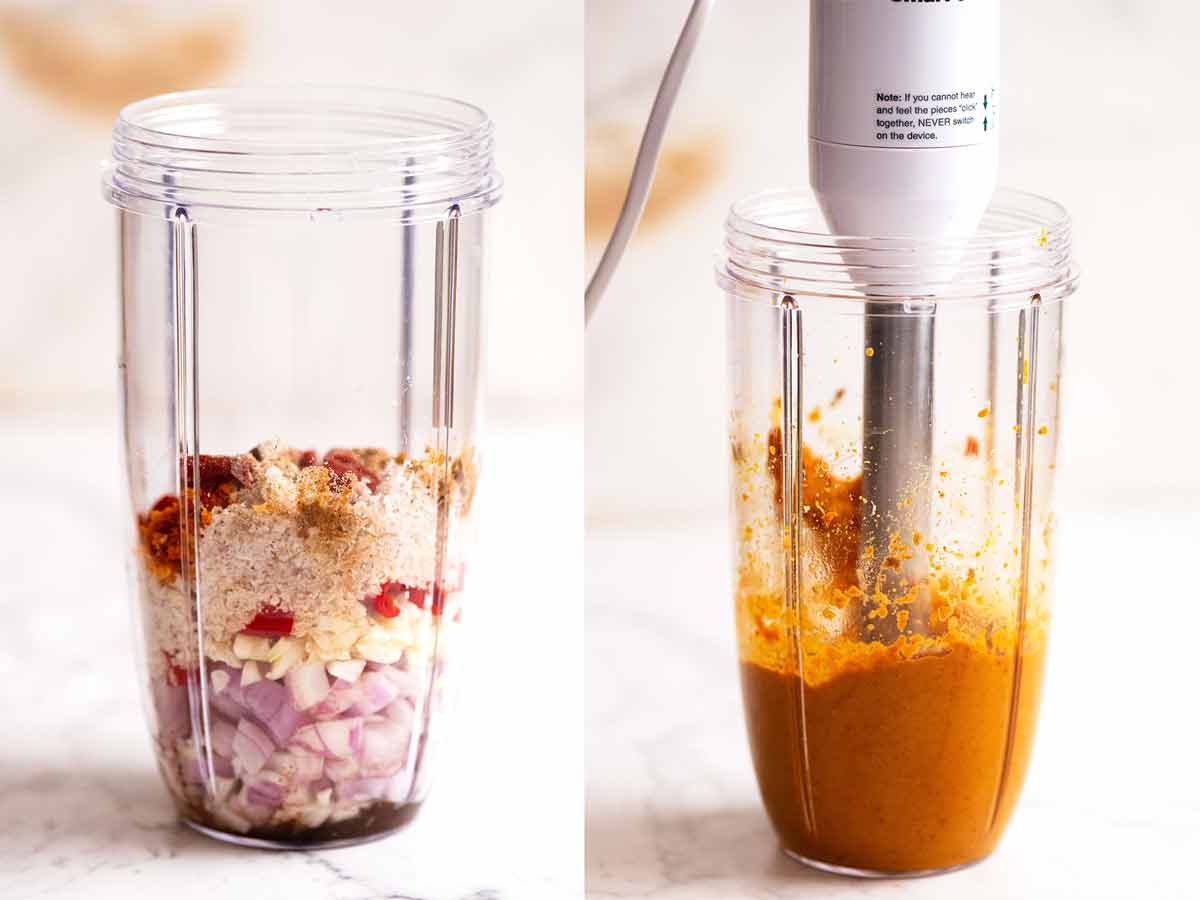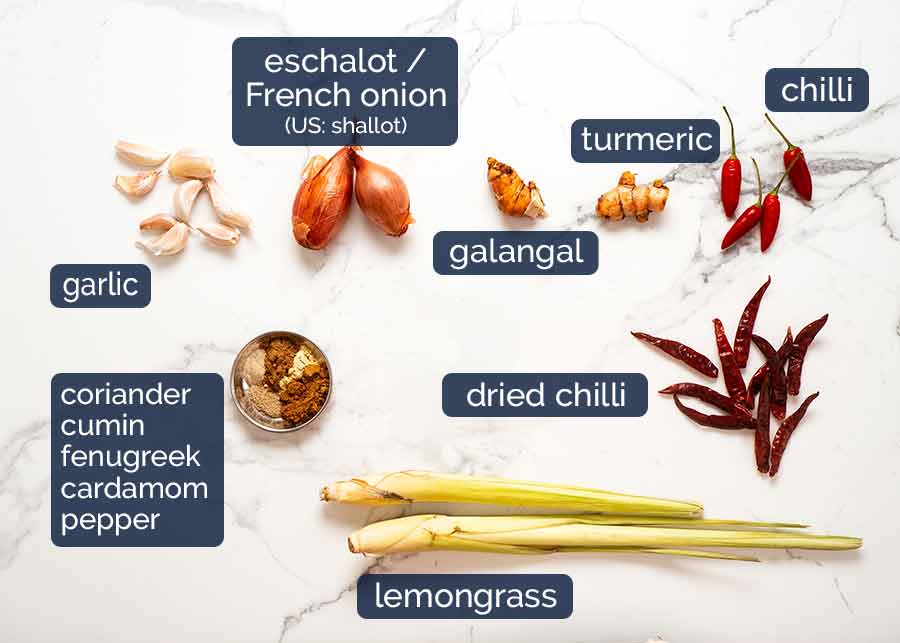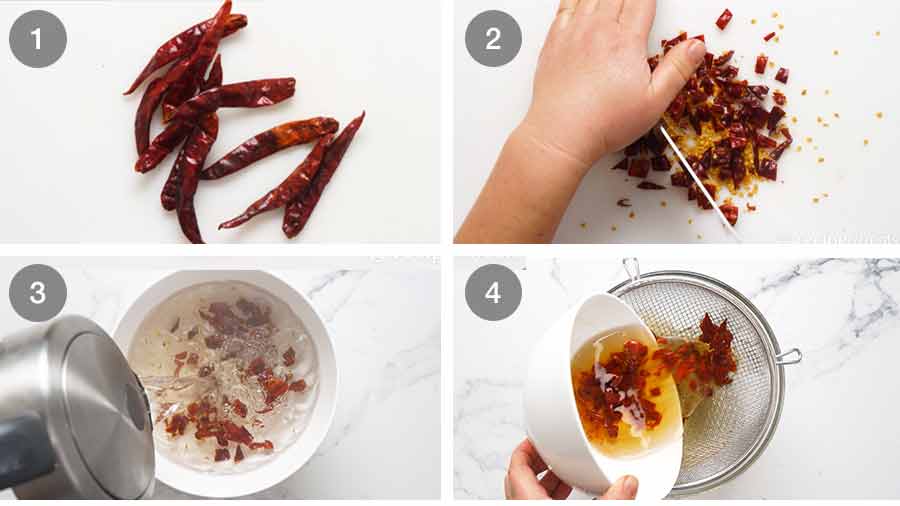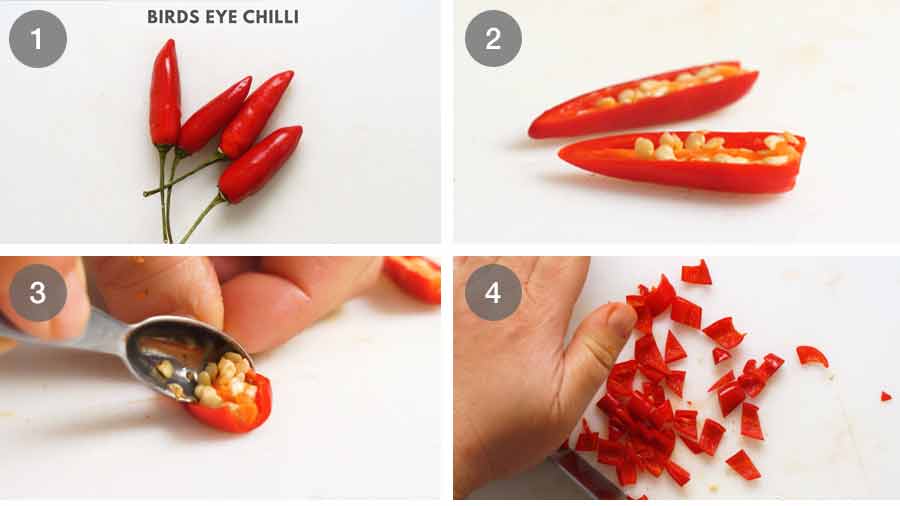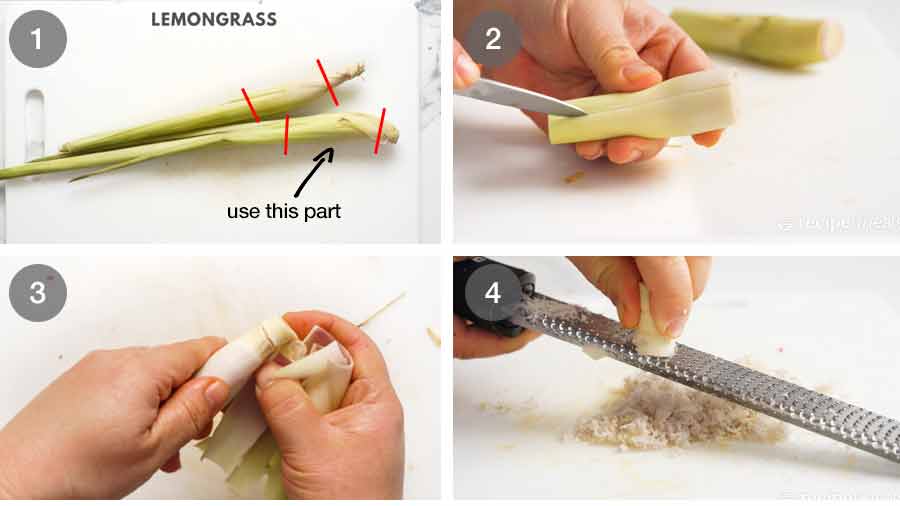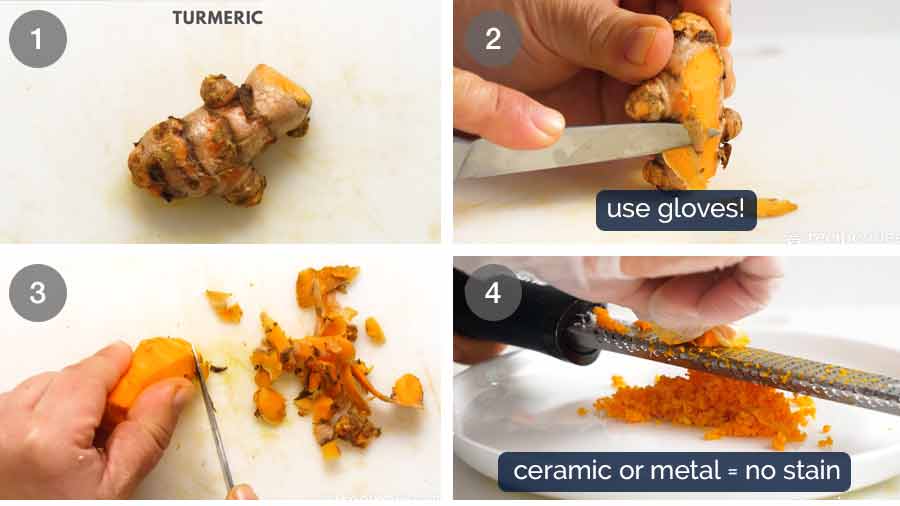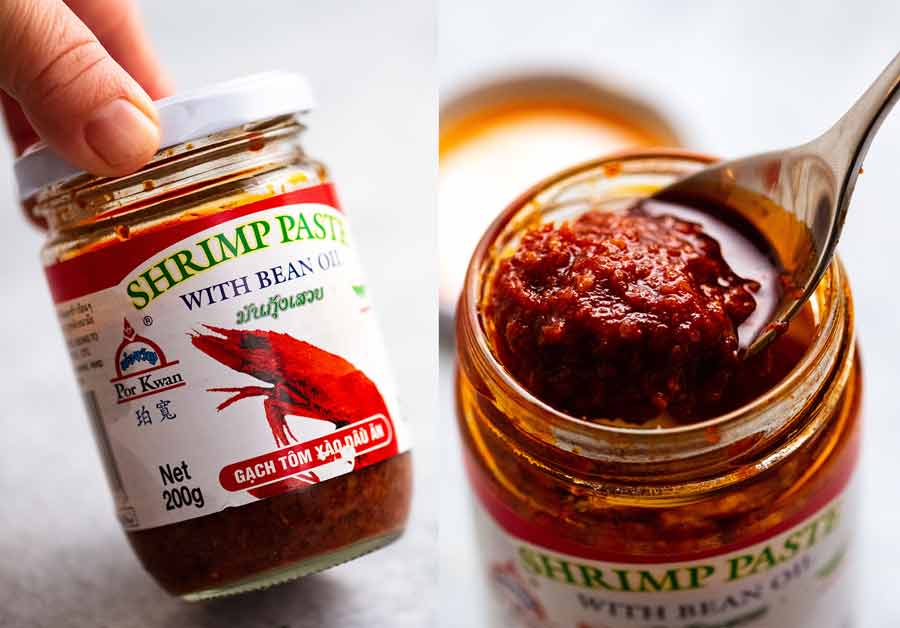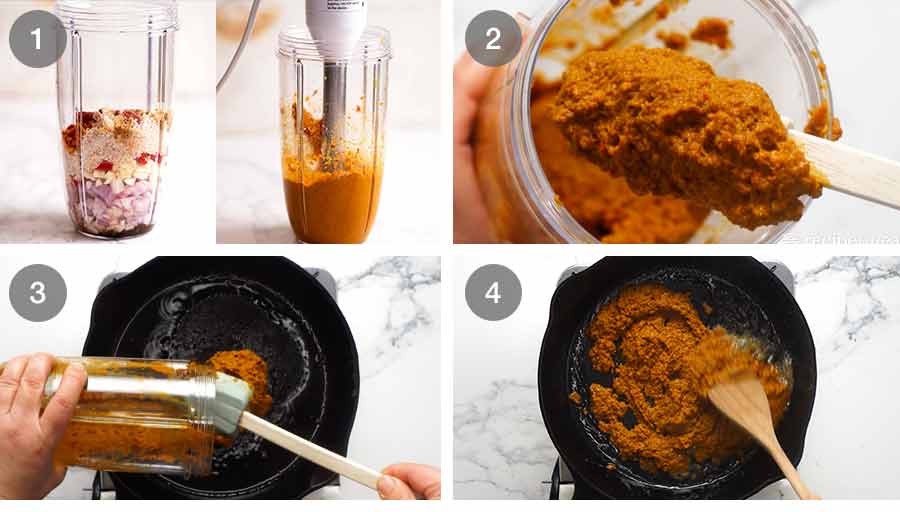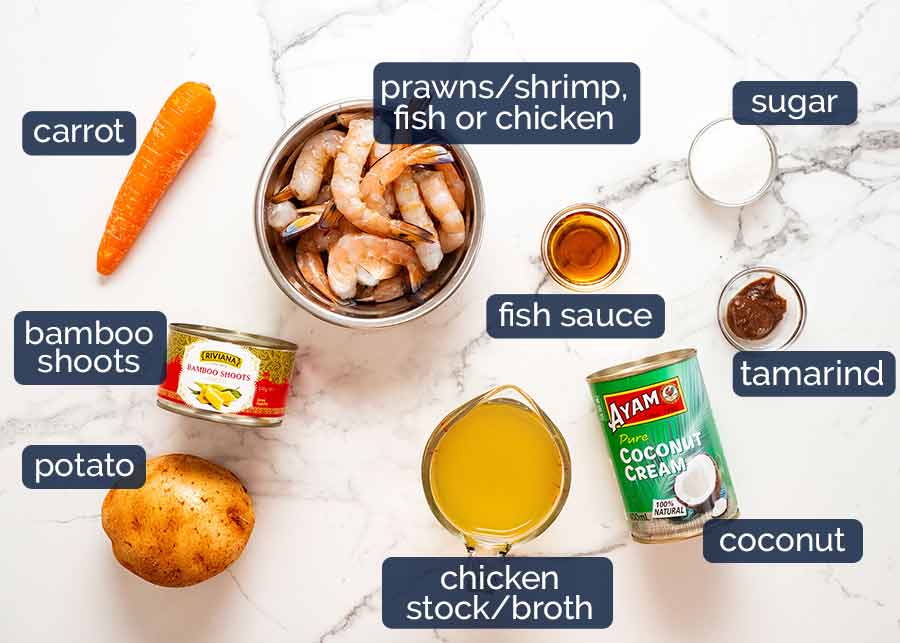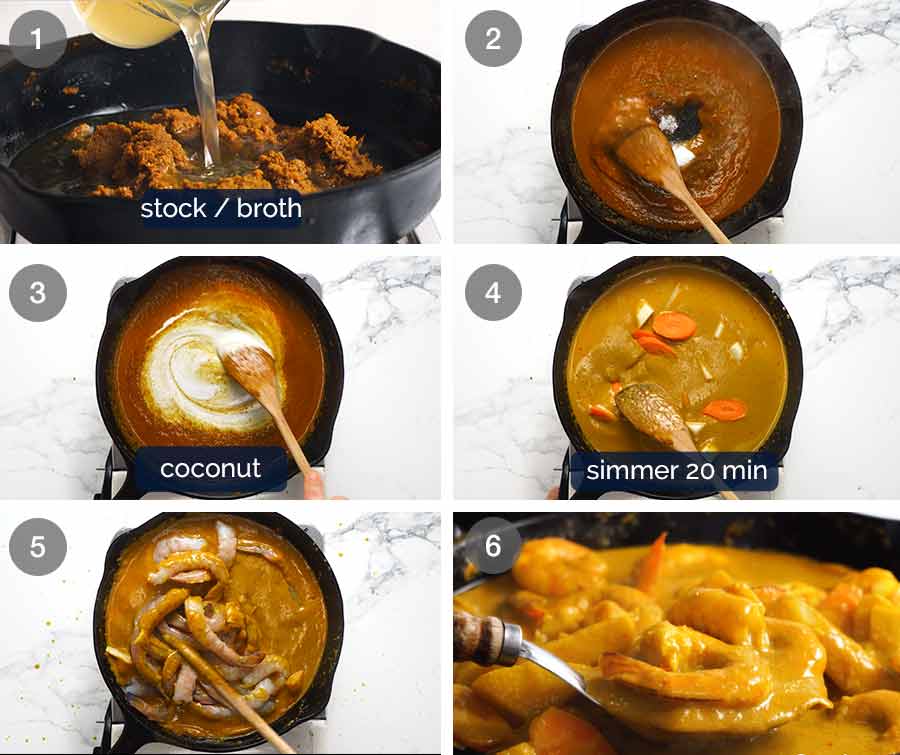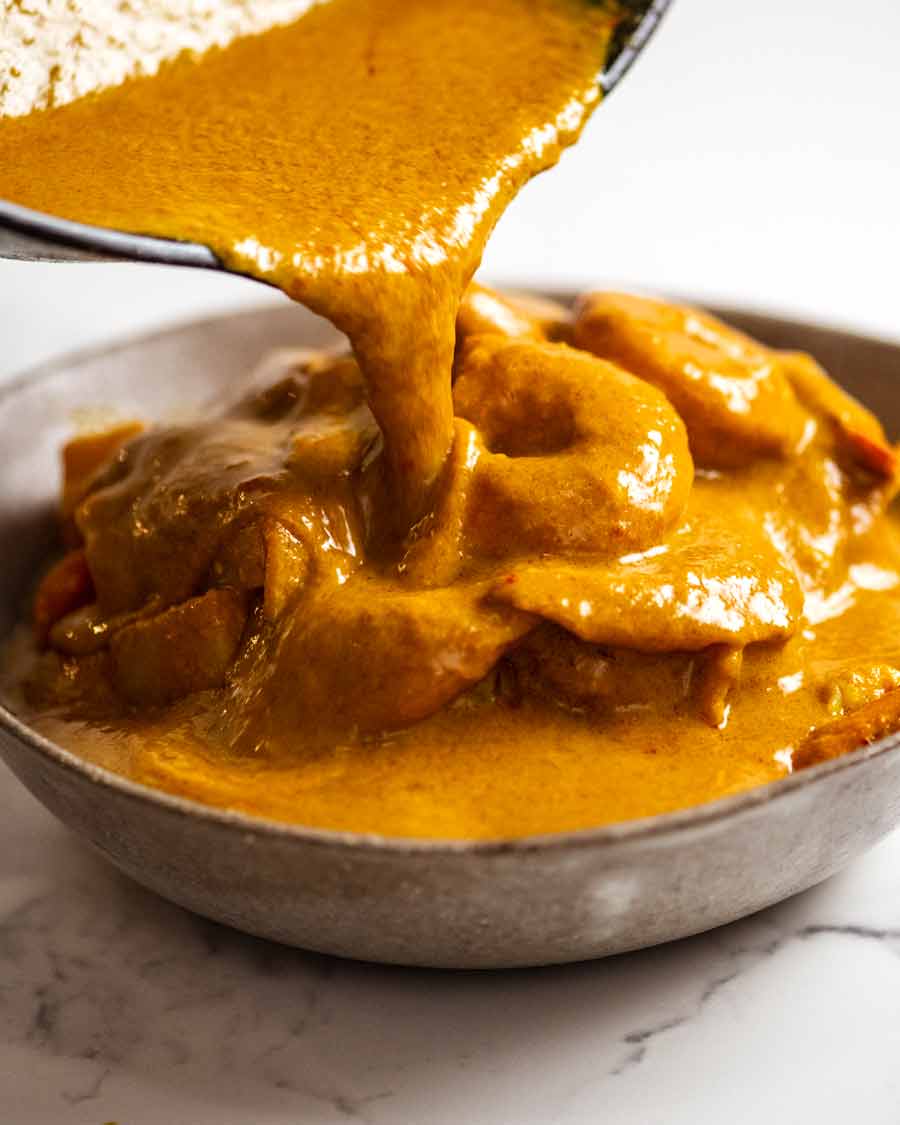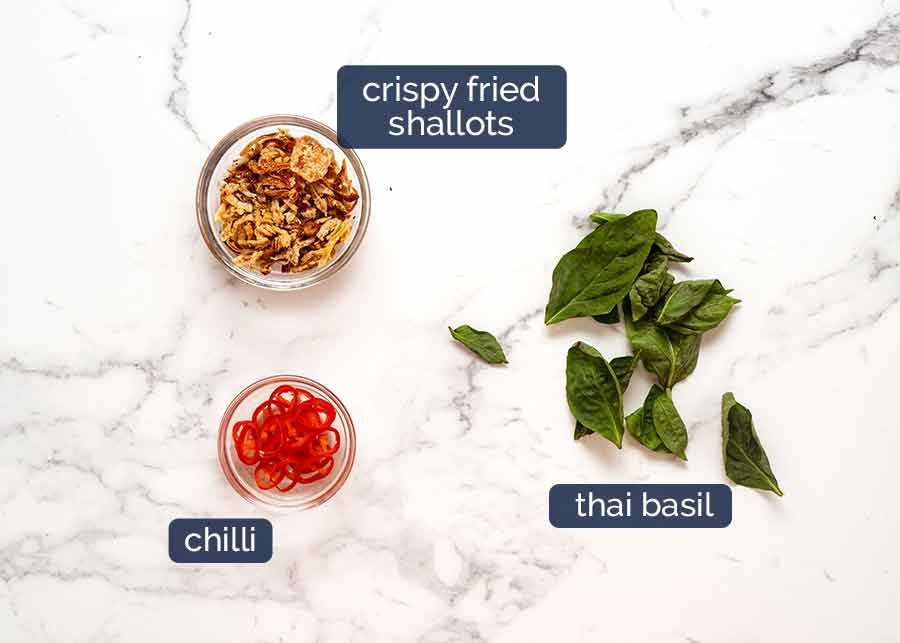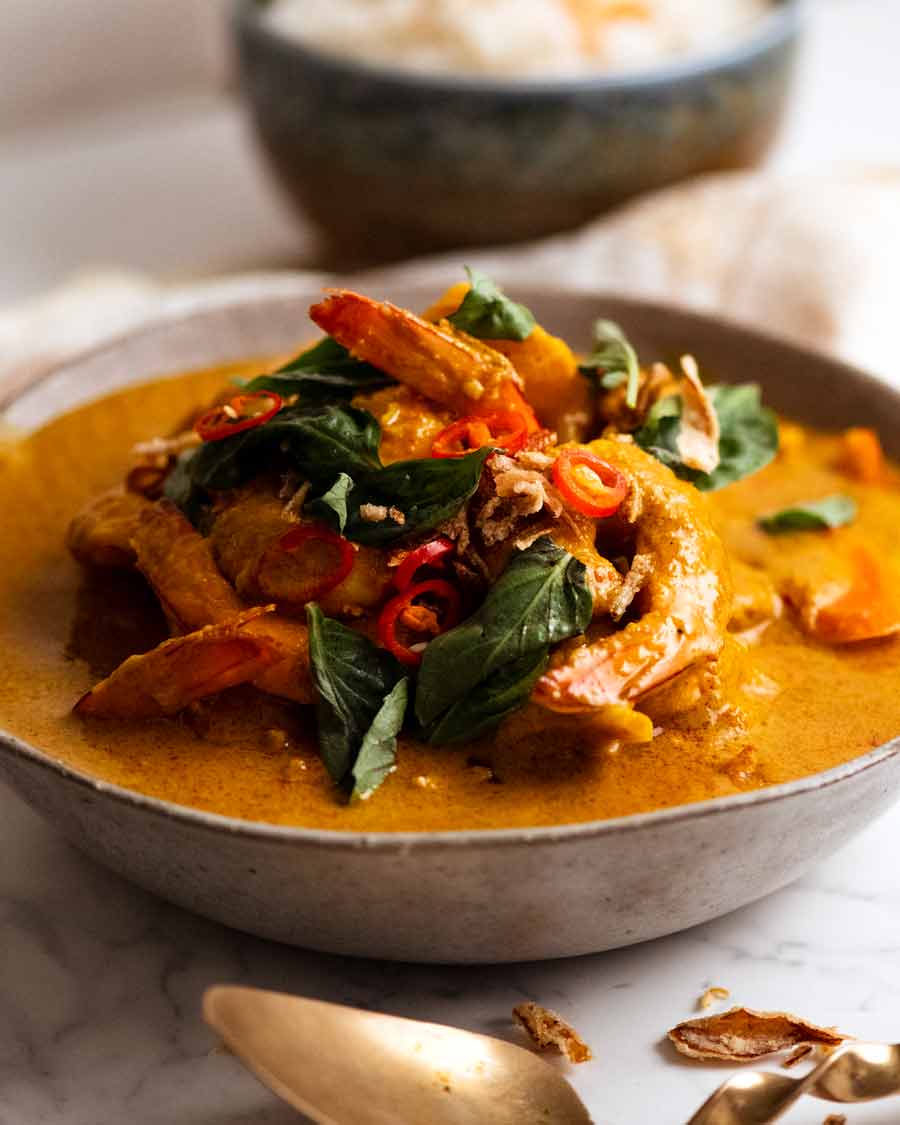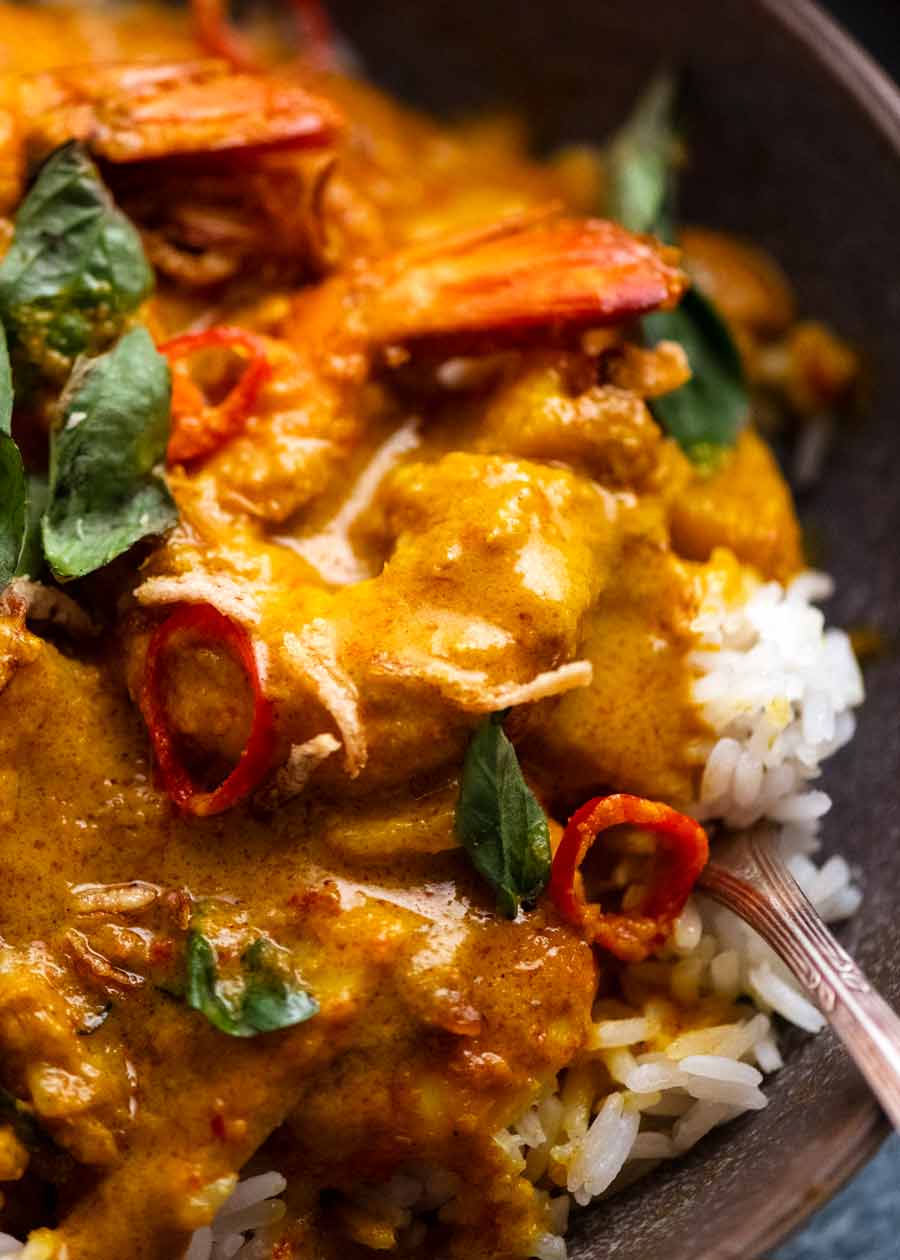And… welcome to Thai week!!
Welcome to Thai Week!
Every now and then, I like to do a recipe theme week. This week it’s THAI week, with three classic recipes to make your very own Thai feast at home:
Thai Yellow Curry
There are many things to love about Thai food, but for me, the jewel in the crown are the curries. I adore that elusive combination of fresh aromatic herbs and spices with the complexity you get from using umami loaded seasonings such as fish sauce and shrimp paste. The colours, meanwhile, make up a rainbow of deliciousness! Striking Thai Red Curry, vibrant Green Curry, caramel coloured Massaman Curry. And now, the latest addition to my Thai recipe collection – this beautiful splash of sunshine in the form of Thai Yellow Curry!
A bit about this Thai Yellow Curry
What is Thai Yellow Curry?
There are a few varieties of what’s considered “yellow curry” in Thai cuisine. They vary in spiciness and sauce richness, with some made with and others made without coconut cream. The one thing they all have in common is that the sauce is made with a good amount of fresh turmeric which gives the Yellow Curry that beautiful warm golden colour. The Yellow Curry I’m sharing today is the type that is most common outside of Thailand which has a fairly rich sauce made with coconut cream. The spice level varies from mild (2 fresh chillies) to quite spicy (4 chillies).
What Thai Yellow Curry tastes like
The sauce is savoury, sweet and fragrant with Thai aromatics including lemongrass, turmeric, garlic, eschalots and chilli. It can be as mild as you want or quite spicy – I enjoy it both ways. It’s not as tangy as other Thai curries, with the obligatory squirt of fresh lime juice you see in other Thai curries noticeably absent in this one. It’s got layers upon layers of flavours which means yes, there are quite a few ingredients – and it’s worth it! Unlike other Thai curries, I really don’t think any store bought curry paste comes anywhere near made from scratch (sorry guys!).
What you need to make Thai Yellow Curry Paste
There are quite a few ingredients involved in making a yellow curry from scratch if you want a truly authentic result. I urge you to try making this at least once – the taste is incomparable to canned pastes! And in fact, I really can’t recommend any store bought yellow curry paste. The preparation of the less common ingredients listed below, such as dried red chillies and galangal, are demonstrated in the recipe video below.
Dried red chillis
Dried red chillis have a rounded flavour compared to fresh chillies and have a mellower heat. That said, it’s a good idea to taste the chillies to gauge the spiceiness and adjust accordingly. (Best to nibble once soaked)If you don’t have dried chilli you can use more fresh chillis instead.Here is how we prepare the dried chillis:
Fresh birds eye chillis or Thai chillis
These bring a bright and fresh taste of chilli by contrast, as well as the real kick! 1 or 2 chillies will give this curry a mild to medium level heat. Use 4 chillis for fairly spicy but not blow-your-head-off. If you’re concerned, you can leave them out! Here is how I deseed and chop fresh chillies. Yes, I know I should use gloves. I forget! (Usually followed by an eye rub with chilli fingers, copious amounts of swearing, and vowing never to make the mistake again. Repeat.) TIP: A measuring teaspoon makes a good tool for scraping out the seeds (these are the spiciest part of chillies). Sharper edges than eating teaspoons, and the shape is perfect for seed scooping.
Lemongrass
Fragrant, with a gentle citrus taste, lemongrass is a quintessential South-East Asian flavour. To prepare, cut and discard the top reedy part off – we only want the bottom 10 – 12cm / 4 – 5″. Peel the reedy green shell to reveal the softer white part on the bottom half of the lemongrass.Substitute: 2 tablespoons of lemongrass paste.
Galangal
This is a plant root used in South-East Asian cooking that looks similar to ginger. It also tastes like ginger but is more citrusy and a little pine-y. It’s actually pretty hard to cut so take care when slicing it! Peel it like ginger, either with a sharp edge teaspoon or (carefully!) with a small knife. This needs to be finely grated because it’s so hard, it doesn’t blend into a smooth paste, you end up with little gritty bits. I use my microplane, one of my favourite kitchen tools – more information here. Find galangal at Asian stores, and in some large grocery stores in Australia (Harris Farm and some Woolworths sell it).Substitute: Use the same amount of ginger + the zest of 1 lime (or lemon).
Fresh turmeric
Turmeric is what gives this curry its essential golden colour, and there’s no yellow curry without it! Fresh turmeric is a root that looks a bit like ginger on the outside but is bright orange on the inside. The flavour is mild, earthy and slightly bitter eaten by itself. Its primary use in cooking is for healthfulness and for colour. Prepare it like ginger – peel the skin (scrape using teaspoon or cut off with a small knife), then grate. Turmeric stains fiercely once grated! Use gloves when handling it, and grate it onto a ceramic or metal plate or bowl. (And yes, the observant among you will notice that yet again, I failed on the gloves front until I started grating it!). Substitute: 1.5 tsp dried turmeric powder, but it won’t be quite the same so I really urge you to use fresh if you can!
Shrimp paste in bean oil
I use Por Kwan Shrimp Paste in Bean Oil, the most popular Thai shrimp paste sold at Asian grocery stores here in Australia. While many traditional recipes use ordinary shrimp (belacan, in blocks, looks like this) which is made with just fermented shrimp, Shrimp Paste sold in jars where other flavouring have been added (mainly oil, a bit of garlic, and soy sauce powder) goes a long way to making a truly restaurant quality curry paste. This is especially so when using a blender instead of mortar and pestle as when dried chillies are ground by hand the traditional, the natural oils are extracted. So using a shrimp paste in oil makes up for this. Por Kwan is the brand I use, pictured below, which is sold at Asian stores. Best alternatives to Thai Shrimp Paste with Bean Oil: If you don’t have access to Thai shrimp paste or belacan, I’m afraid I’d suggest giving this recipe a miss because I can’t guarantee the outcome will be successful!
Other ingredients
Garlic – Yes, 8 cloves! It sounds like a lot but the paste will be fried off and the curry simmered for a good 15 – 20 minutes. The garlic will not at all be obvious in the final dish but mellows to become just another instrument playing in this flavour orchestra.Spices – Coriander, curmin, cardamom, fenugreek powder and white pepper. Our spice selection for this yellow curry which reflects the Indian influence on Yellow Curry. Massaman Curry is another such example of a Thai Curry with Subcontinental influences.We go a little heavier on the spices for yellow curry compared to red or green curries, which are driven more by their heavy chilli content than spices. Of these spices, fenugreek might be the hardest to find. If you do not have it, leave it out.
How to make Thai Yellow Curry Paste
Once you’ve prepared the ingredients, it’s as simple as blitzing! We go a little heavier on the spices for yellow curry compared to red or green curries, which are driven more by their heavy chilli content than spices. Of these spices, fenugreek might be the hardest to find. If you do not have it, leave it out. TIP: Use a stick blender. Much more effective than blenders, Nutribullets and mini food processors which you need to scrape down repeatedly to blitz thoroughly. Not to mention easier to clean! After we’ve made the curry paste, we cook it on the stove for a few minutes on a medium heat. The purpose of this step is to dry out the wet paste, toasting the herbs and spices to intensify the flavour. Yellow curry paste done – now it’s onto the curry. You’ll be glad to hear it’s a simple plonk-and-simmer job!
What goes in Thai Yellow Curry
For this curry, I chose prawns (shrimp) because seafood is a popular choice in yellow curries. Chicken and fish are also other favourites for yellow curry which you can use instead. I’ve included directions for both these in the recipe notes.
Prawns (shrimp) – I like to use medium prawns as small prawns quick so quickly they don’t have time to absorb some of the sauce flavour, and large ones are more difficult to serve / eat.Use fresh if you can, and keep the tail on. Otherwise frozen thawed is perfectly fine. I don’t need to tell you that the better the quality of the prawn, the better the dish!Alternatives: Fish and chicken are popular alternatives to prawns, so I’ve included directions for both of these in the recipe notes.Potato – It’s important to ensure you do not cut the potato too thick, or it will take a long time to cook as potatoes take a surprisingly long time to cook in coconut sauce! The cutting size is specified in the recipe.Any kind of potato is OK (waxy or starchy) for this recipe, but waxy will tend to hold its shape better.Carrot – Ditto the carrots on the thickness caveat! Follow the recipe!Coconut cream – We use cream to give the curry sauce its thickness as well as richness. You can use milk or lite versions, but the curry will be a little thinner in consistency and less full in richness. Look for brands that have a high percentage of coconut extract. Ayam brand is my choice.Tamarind puree – Tamarind is a sour fruit pod whose pulp is used in South East Asian food to add acidity to food like this curry. You can buy it is a jarred puree in large Australian supermarkets (Coles, Woolworths) or Asian grocers.Bamboo shoots – Sold in cans at large grocery stores (Woolies, Coles, Harris), they have a crisp juicy texture and have a unique taste. Substitute with green beans (for similar shape) or more carrots.
How to make Thai Yellow Curry
This part of the recipe really is simple – just simmer everything in a skillet. Use fresh if you can, and keep the tail on. Otherwise frozen thawed is perfectly fine. I don’t need to tell you that the better the quality of the prawn, the better the dish! Alternatives: Fish and chicken are popular alternatives to prawns, so I’ve included directions for both of these in the recipe notes. Any kind of potato is OK (waxy or starchy) for this recipe, but waxy will tend to hold its shape better.
Garnishes for Thai Yellow Curry
Here are the garnishes typically used to serve Thai Yellow Curry. If your heat is too strong and the sauce reduces and thickens too quickly, lower heat and add a splash of water. Next, we’re going to finish the dish with a few garnishes!
Thai Basil Leaves – Tastes like regular basil plus a bit of aniseed flavour. Highly recommended to finish this dish off. Substitute with coriander/ cilantro (best) or normal Italian basil.Crispy fried shallot pieces (optional)– Salty little fried bits of shallots brings a great finishing touch to the dish both for the flavour and texture. Find it in the Asian section of supermarket but cheaper at Asian stores.Fresh chilli slices – Purely option, for a splash of colour and extra spice, if desired. Use large chillies if you want the colour without the spiciness.
Phew! And with that, I am done – you are now armed with everything you need to know to make this Thai Yellow Curry! Substitute with coriander/ cilantro (best) or normal Italian basil.
A quick and easy recipe, this ain’t!
This is certainly not a quick ‘n easy midweek meal. There’s a fair few ingredients, and to make it as written calls for a trip to the Asian grocery store. It involves sourcing ingredients that may be new to you, and preparing ingredients you haven’t cooked with before. But is it worth it? Hundred times over, YES YES YES! While these days, you can get very good store bought curry paste for Thai Red Curry, Green Curry and Massaman Curry, I am yet to find an acceptable store bought Yellow Curry Paste, even at Asian grocery stores. And, at the risk of sounding totally obnoxious, this recipe delivers a curry that’s far superior to most standard suburban Thai takeout places that take the jarred curry paste shortcuts. So if you’re a Thai Curry fan, I urge you to try making this at least once. The taste is incomparable to canned pastes! – Nagi x
Watch how to make it
Life of Dozer
Dozer! You were NOT supposed to go in the water today! 👿 And then of course, he did THIS (5 minutes before I was due home for a zoom meeting 🙄):
